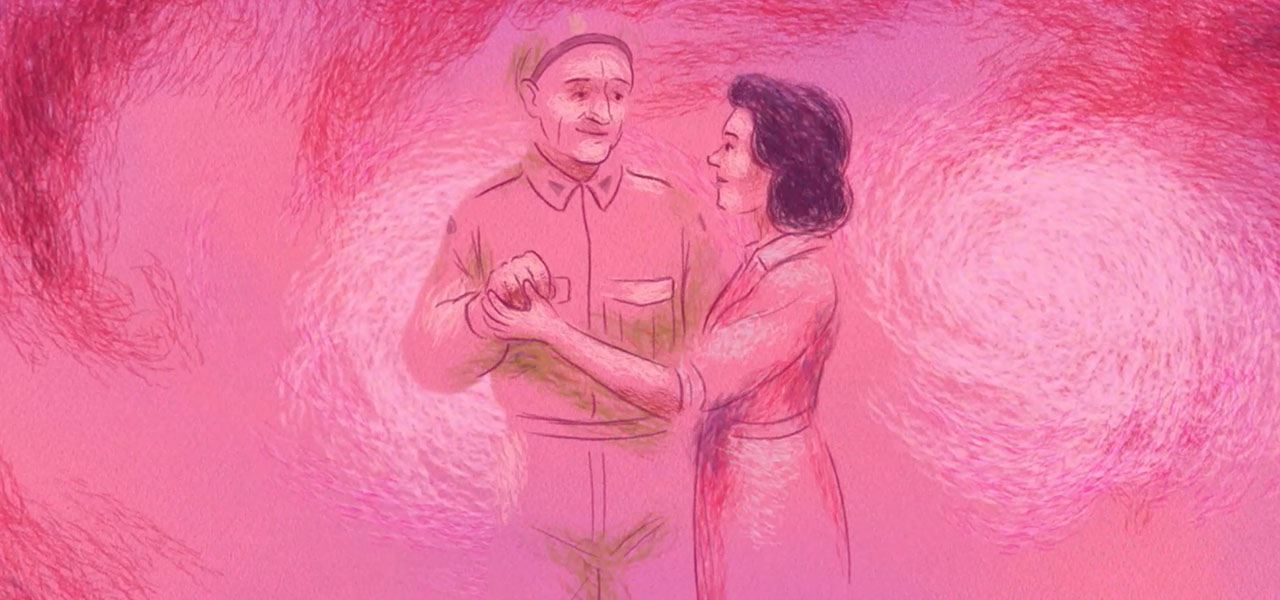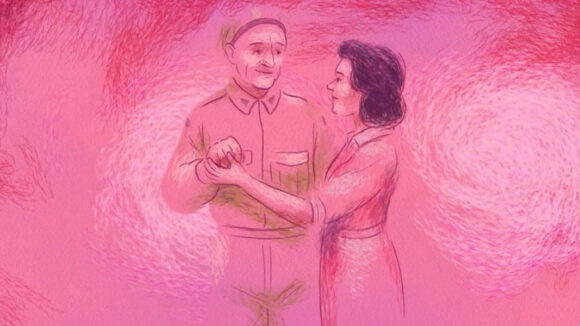

Oscar Shortlist Interviews: Directors Iain Gardner Shares His Favorite Shot From ‘A Bear Named Wojtek’ (Exclusive)
Cartoon Brew invited the filmmakers behind each of this year’s 15 Oscar-shortlisted animated shorts to share their favorite shot from their film and explain why it’s special to them. The pieces are being published in the order that materials were received.
In this piece, we’re looking at the Scotland/Poland short A Bear Named Wojtek from director Iain Gardner.
In his heartfelt half-hour film, Gardner tells the tale of Edinburgh Zoo’s famous bear, Wojtek. This orphaned brown bear was brought to Edinburgh, having been previously adopted by Polish soldiers during World War II. The film is a British-Polish co-production by Illuminated Film Company, Studio Miniatur Filmowych, Wojtek Animation, Animation Garden, and Running Rabbit Films.
Gardner recently spoke with Cartoon Brew about the making of the short. Below, he shares his favorite shot from the film and tells us about its significance:
Ceilidhs [a traditional Scottish and Irish social gathering] are very much part of Scottish culture, with Scottish country dancing being compulsory when I was at school, and something I’ve always enjoyed. I have fond memories of being at ceilidhs with my parents. Indeed, I wanted to make this film for my parents, and this very shot – Sequence 100, Shot 210 – is special to me as they are in it!
My mum passed shortly before I pitched the film at Cartoon Forum in 2018, making it quite an emotional day to get through. My dad soon followed in 2019, meaning neither of them saw the project enter production. Dad was obsessed with war films and WWII documentaries, so I’d always wanted to make something in that genre for him. I don’t personally consider this to be a ‘war film’ and for me it is a ‘refugee story.’ This shot is part of that narrative of displaced people trying to integrate within a new culture, which could be strange to them.
At every ceilidh, there will be someone explaining the complicated dance steps to their inexperienced partner – especially the tricky steps of a ‘Gay Gordon’ shown here – and that was usually my mum! In this scene, Beryl trying to teach Piotr the dance references my memories of my Mum. My husband Anthony and I also had a ceilidh at our wedding, so I loved translating the atmosphere of that joy into the film.
Stylistically, this shot reflects the influence of Frédéric Back’s Crac. There’s a scene in Crac where the central couple are framed dancing in isolation and then the screen swells with dancing figures – this shot is homage to that animation. Back’s collaborator Normand Roger was the composer on our film, however our ceilidh music was performed by his friend, Scottish fiddler Pete Clark. The music we hear was written by Pete in tribute to his friend, who also happened to be the father of Marcy Page, who is Normand’s wife, so there’s a nice personal connection within the music as well.
Early in production our editor Rachel Roberts sliced archive war footage to help with the pace and atmosphere of Sequence 70 – the Battle of Monte Cassino. It felt natural therefore to use other moments of rotoscope throughout the film, and to be honest, with so many shots to get through, I had to find ways to cut corners for the character-heavy ceilidh!
Anthony and I had joined friends at the annual Lonach Hall New Year Ceilidh in the Cairngorms, so I recorded lots of reference footage. My sister had also digitized home videos of our parents, including a ceilidh for my dad’s 70th at their local bowling green in Cambuslang. There was a perfect shot of mum and dad doing the Gay Gordons – so I made sure to rotoscope them into the shot… that’s them just ahead of Piotr and Beryl on the dance floor!
Our story has been told in respect of all people displaced by conflict, so it would have been highly inappropriate to dedicate the film to any one person’s individual loss. However, if I had had to include an ‘in memoriam’ it would have been to my parents – Alex and Doreen Gardner – it makes me so happy to see them continue to dance together here.
Read the other entries in the series:

.png)